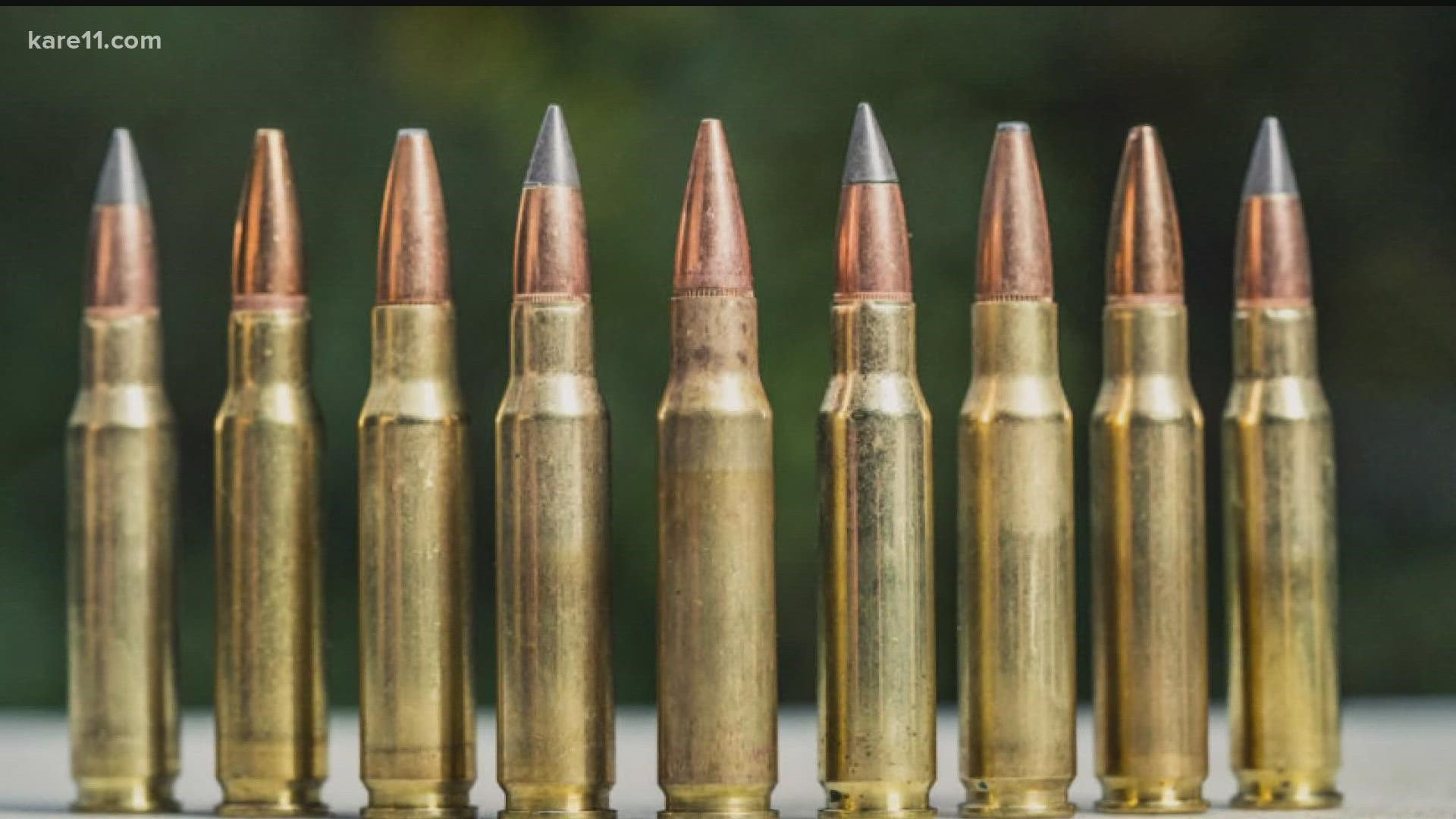ST PAUL, Minn. — Minnesota lawmakers are weighing the idea of phasing out lead ammunition, especially in wildlife areas, to cut back on lead poisoning of wildlife and humans who accidentally ingest fragments of buck shot or bullets.
One bill, authored by Deep Haven Democrat Kelly Morrison, would create a lead bullet buy-back program through the DNR, and pay for vouchers to help hunters buy less-toxic ammo.
"Lead-based ammunition is a significant, relatively unregulated source of lead knowingly discharged into the environment in the United States," Rep. Morris told the House Preventive Health Policy subcommittee Wednesday.
"Exposure in childhood to even slightly elevated levels of lead produces lasting neurological deficits in intelligence and behavior."
There's also plenty of evidence that raptors and other scavenger birds are sickened when they accidentally eat lead bullet fragments from large game hunting.
"In particular, gut piles create an incredibly rich and high value meal for these birds," Victoria Hall of the University of Minnesota Raptor Center told lawmakers via Zoom, as a young bald eagle named Max sat perched behind her squawking on cue.
Hall said at least 85% of raptors admitted to Raptor Center’s clinic have some level of lead poisoning.
"It only takes a piece of lead the size of a grain of rice about half to one centimeter large to kill a bald eagle when ingested."
The committee also heard from Gretchen Strate, the Wildlife Rescue Team Coordinator with Wildlife Rehabilitation & Release, a nonprofit based in Minnesota. Strate told lawmakers about trumpeter swans that had been found with fatal levels of lead poisoning at area lakes. She said they were most likely sickened by ingesting lead fishing sinkers.
"Last month we rescued two trumpeter swans from a frozen-over lake in Anandale that were taken to the Wildlife Rehab Center in Roseville and were diagnosed with lead poisoning," Strate said.
"Despite receiving treatment both swans had to be humanely euthanized after their conditions continued to deteriorate."
A separate bill authored by Rep. Peter Fischer of Maplewood would ban lead sinkers and jigs that weigh less than an ounce and are shorter than two and a half inches long. Rep. Morrison is one of the co-authors of Fisher's fishing tackle bill.
Brian Gosch of the National Rifle Association was among those who testified against Morrison’s bill.
"Banning lead ammunition will make the supply chain problem of any type of ammunition much worse. Further, the alternatives to lead ammunition can be less lethal, and therefore less ethical for hunting."
Lead is especially toxic to children, who most typically are exposed to lead dust from peeling and chipping pain in windows in homes built before 1978, when lead was banned in most household paints.
They also can ingest it from toys with lead parts, by playing in soil that has lead paint dust in it, or living in an older home that’s undergoing a remodeling project.
"We see this in our clinic and practice with impacts on the nervous system and the brain, including slow development, slow growth, learning behavior problems, speech and hearing problems," Dr. Zeke McKinney told the committee.
The Minnesota Department of Health has an interactive online map, which highlights where children have had the most exposure to lead poisoning, based on elevated lead levels in blood tests.
Lead in drinking water is also on the radar for House Democrats this session.
Rep. Sydney Jordan of Minneapolis has a bill that would create a grant program to help cities replace aging lead water service lines. Those are the buried lines that carry water from the city water mains into homes.
"No amount of exposure to lead is safe. Lead service lines are also one of the largest lead sources in Minnesota drinking water," Rep. Jordan told the committee Wednesday.
She said one goal of the bill would be to help cities leverage aid from the federal Infrastructure and Jobs Act that Congress passed late last year. She said the EPA is still developing guidelines for how government agencies can disperse those dollars.
"In this bill, cities may use grants to identify and map their existing lead lines, remove and replace lead lines, and maximize federal funding for lead line replacement."
The Minnesota Department of Health, in conjunction with the Minnesota Public Facilities Authority, is managing $43 million in annual grants from the federal government for water system improvements.
The state has received more than 500 applications from local communities for the Drinking Water Revolving Loan program, totaling more than $1.2 billion. MDH maintains a priority list ranking the projects in order of urgency.
Watch the latest political coverage from the Land of 10,000 Lakes in our YouTube playlist:

